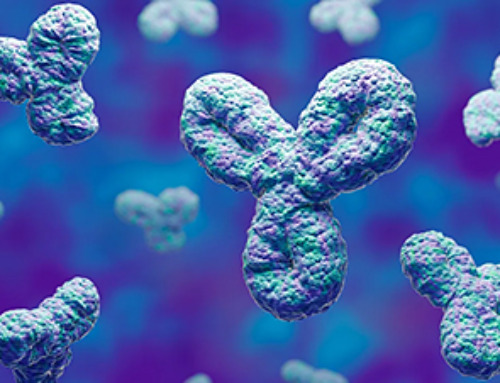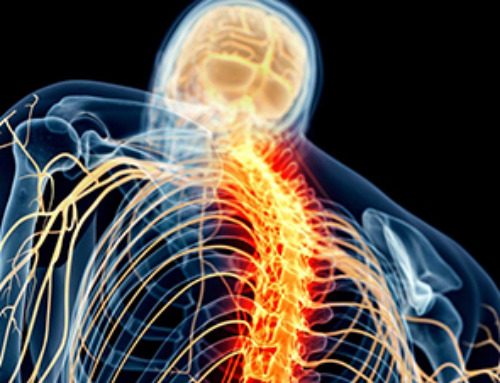New research suggests that microplastics in our oceans might be hundreds of thousands of times more abundant than current detection methods are reporting.
Microplastic particles (MPs) are tiny fragments of plastic, less than 5mm. They result from both commercial production and the breakdown of larger plastics. One of the biggest sources is synthetic fabrics.
Chemicals within microplastics have now made their way into oceans and waterways, and even drinking water, causing concern to scientists and public health officials. The increase of microplastics in aquatic systems is dangerous to both marine life and creatures, including humans, through the consumption of seafood.
Recent reports have also that microplastics themselves are common in every part of the human body, including the testicles.
A new study, published in the Marine Pollution Bulletin, shows that the problem is likely to be even greater than we previously thought.
Using Raman microspectroscopy to determine the chemical makeup of samples, the scientists analysed ocean waters from the Caribbean to the Arctic. Their results show that the most abundant and tiny microplastics aren’t being detected by current methods.
Normally, microplastics in ocean waters are measured using net tow surveys. Tightly meshed “plankton nets” sieve microplastics out of the water, which can then be analysed.
These plankton nets detect particles between 300–500 micrometres in size, where a micrometre is one millionth of a metre. The Raman microspectroscopy technique is able to reveal microplastics much smaller than just 15 micrometres.
“Our results highlight the numerical primacy of small microplastic particles in seawater, and we found that the most abundant microplastics were between 1 and 14 micrometres,” says first author Medina Faull, from Stony Brook University in New York. “60% were under 5 micrometres, and none were larger than 53 micrometres.”
“This size fraction has been totally overlooked in almost all marine microplastics.” Faull adds.
The Raman microspectroscopy based research found microplastics less than 53 micrometres in size hundreds of thousands of times more often than all the combined reports around the globe using traditional detection techniques.

The false-color images of green and red match for specific polymers detected in the particle. Credit: Luis Medina Faull.
“Understanding health risks from exposure to microplastics is a vastly understudied area, and investigations are needed to understand the health impacts from microplastics of different shapes, sizes, and compositions,” says Jaymie Meliker, a public health researcher at Stony Brook University who was not involved in the study.
Faull emphasises the need for wider research on microplastics in the ocean.
“Firstly, most of the ocean is grossly under-sampled, and the majority of existing data is based on towed net studies. And smaller, less buoyant microplastic particles residing below the ocean’s upper few meters are almost never sampled. Secondly, understanding sources of microplastics transport and final landing locations such as ocean floors is crucial to explain the distribution patterns of microplastics throughout the ocean,” he explains.
News
Specially engineered antibody delivers RNA therapy to treatment-resistant tumors
Elias Quijano, PhD; Diana Martinez-Saucedo, PhD; Zaira Ianniello, PhD; and Natasha Pinto-Medici, PhD, there are 25 other contributors, most from Yale's Department of Therapeutic Radiology and from the departments of genetics, molecular biophysics and [...]
Vaccinated women face fewer cervical cancer risks
New data from Denmark shows the HPV vaccine’s powerful long-term impact, while also revealing why cervical cancer screening is still essential. A Danish study published in the journal Eurosurveillance reports that women who received the human [...]
3D-printed implant offers a potential new route to repair spinal cord injuries
A research team at RCSI University of Medicine and Health Sciences has developed a 3-D printed implant to deliver electrical stimulation to injured areas of the spinal cord, offering a potential new route to [...]
Nanocrystals Carrying Radioisotopes Offer New Hope for Cancer Treatment
The Science Scientists have developed tiny nanocrystal particles made up of isotopes of the elements lanthanum, vanadium, and oxygen for use in treating cancer. These crystals are smaller than many microbes and can carry isotopes of [...]
New Once-a-Week Shot Promises Life-Changing Relief for Parkinson’s Patients
A once-a-week shot from Australian scientists could spare people with Parkinson’s the grind of taking pills several times a day. The tiny, biodegradable gel sits under the skin and releases steady doses of two [...]
Weekly injectable drug offers hope for Parkinson’s patients
A new weekly injectable drug could transform the lives of more than eight million people living with Parkinson's disease, potentially replacing the need for multiple daily tablets. Scientists from the University of South Australia [...]
Most Plastic in the Ocean Is Invisible—And Deadly
Nanoplastics—particles smaller than a human hair—can pass through cell walls and enter the food web. New research suggest 27 million metric tons of nanoplastics are spread across just the top layer of the North [...]
Repurposed drugs could calm the immune system’s response to nanomedicine
An international study led by researchers at the University of Colorado Anschutz Medical Campus has identified a promising strategy to enhance the safety of nanomedicines, advanced therapies often used in cancer and vaccine treatments, [...]
Nano-Enhanced Hydrogel Strategies for Cartilage Repair
A recent article in Engineering describes the development of a protein-based nanocomposite hydrogel designed to deliver two therapeutic agents—dexamethasone (Dex) and kartogenin (KGN)—to support cartilage repair. The hydrogel is engineered to modulate immune responses and promote [...]
New Cancer Drug Blocks Tumors Without Debilitating Side Effects
A new drug targets RAS-PI3Kα pathways without harmful side effects. It was developed using high-performance computing and AI. A new cancer drug candidate, developed through a collaboration between Lawrence Livermore National Laboratory (LLNL), BridgeBio Oncology [...]
Scientists Are Pretty Close to Replicating the First Thing That Ever Lived
For 400 million years, a leading hypothesis claims, Earth was an “RNA World,” meaning that life must’ve first replicated from RNA before the arrival of proteins and DNA. Unfortunately, scientists have failed to find [...]
Why ‘Peniaphobia’ Is Exploding Among Young People (And Why We Should Be Concerned)
An insidious illness is taking hold among a growing proportion of young people. Little known to the general public, peniaphobia—the fear of becoming poor—is gaining ground among teens and young adults. Discover the causes [...]
Team finds flawed data in recent study relevant to coronavirus antiviral development
The COVID pandemic illustrated how urgently we need antiviral medications capable of treating coronavirus infections. To aid this effort, researchers quickly homed in on part of SARS-CoV-2's molecular structure known as the NiRAN domain—an [...]
Drug-Coated Neural Implants Reduce Immune Rejection
Summary: A new study shows that coating neural prosthetic implants with the anti-inflammatory drug dexamethasone helps reduce the body’s immune response and scar tissue formation. This strategy enhances the long-term performance and stability of electrodes [...]
Scientists discover cancer-fighting bacteria that ‘soak up’ forever chemicals in the body
A family of healthy bacteria may help 'soak up' toxic forever chemicals in the body, warding off their cancerous effects. Forever chemicals, also known as PFAS (per- and polyfluoroalkyl substances), are toxic chemicals that [...]
Johns Hopkins Researchers Uncover a New Way To Kill Cancer Cells
A new study reveals that blocking ribosomal RNA production rewires cancer cell behavior and could help treat genetically unstable tumors. Researchers at the Johns Hopkins Kimmel Cancer Center and the Department of Radiation Oncology and Molecular [...]





















